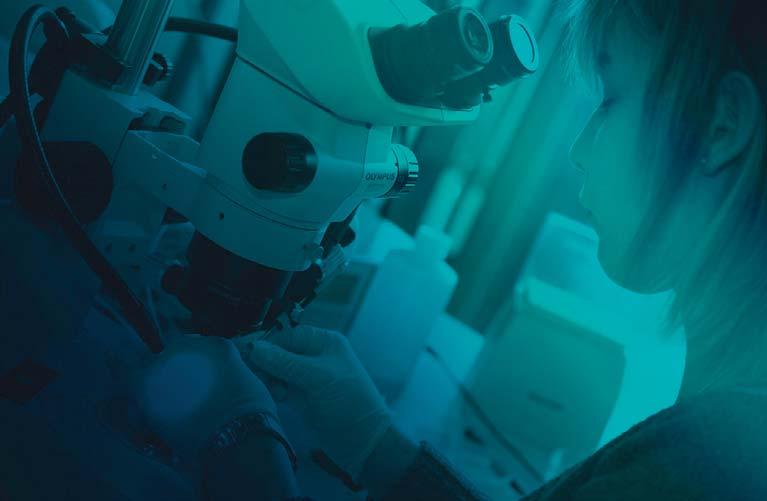© ULB
Combining cross-disciplinary expertise to advance research in neurophysiology Interview with Prof. Alban de KERCHOVE d’EXAERDE, Research Director FRS-FNRS at the Laboratory of Neurophysiology of ULB Neuroscience Institute, Université Libre of Brussels (ULB), President of the Belgian Society of Neuroscience (BSN), Vice-President of the Brussels Commission on Animal Experimentation
C
© ULB
ould you please present your research work to us? My research work focuses on a subcortical region of the brain, the basal ganglia, which play a key role in motor control (locomotion and motor learning, procedural memory in relation, among other things, to skills) and the reward system, but also on associated pathologies such as Parkinson’s disease, with its well-known motor disorders, addictions (result of hijacking of the reward system. This region is also involved in neuropsychiatric diseases such as Autism Spectrum disorder (ASD), schizophrenia, attention deficit and hyperactivity disorders, compulsive obsessional disorders. I’m working with mouse models to better understand the fine neuronal circuitry, and roles of genes involved in these diseases, which would not be possible in humans or primates yet. This requires behavioural studies following gene expression modifications or the activation or inhibition of neuronal populations of basal ganglia through approaches such as optogenetics or in vivo calcium imaging. Neurone of the indirect pathway of the Basal Ganglia
In 2018 you received the triennial award of the Simone and Pierre Clerdent foundation for your project entitled: “Genetic identification of neural circuits involved in the ADHD syndrome (attention deficit/ hyperactivity disorder)”. Could you please tell us more about this? I was awarded this prize for the development of a preclinical model of attention and hyperactivity disorders in mice. This model relies on triple validity: conceptual validity (a dysfunction located within the same region as observable in humans); face validity (the animal imitates human behaviour in terms of hyperactivity, impulsiveness and attention deficit disorders); and predictive validity (a given molecule has an identical effect in humans and mice). The model enables us to precisely evaluate how the therapies work and understand the neuronal circuits involved in this disorder in order to potentially develop new therapeutic approaches. In addition, very recently, we have published in Biological Psychiatry an article deciphering from molecule to behaviour how an alteration of a gene (mTOR) and its pathway, frequently isolated in ASD patients, in a specific neuronal population are responsible of autistic-like behaviours.
What do you think are the main challenges that researchers must tackle in the field of neurophysiology in the coming years? Advances in in vivo technology have led to the simultaneous recording of many neurons (electrical activity, imaging etc.), thereby generating a massive amount Behavioral test to evaluate of data to be processed. Today, the reinforcing properties of drugs a laboratory like mine needs to combine transversal expertise in molecular and cellular biology, electrophysiology, behaviour, signal analysis, programming, legal expertise etc. The difficulty lies in recruiting profiles that are increasingly becoming ever broader and deeper in scope. Furthermore, these new in vivo technologies have a very substantial cost, thereby raising the cost of research. It is, however, vital to understand the exact role of a neuron and how it encodes information in a structure as complex as that of a live animal.
Can you tell us more about the work of the Brussels Commission on Animal Experimentation? The agency is the result of the transposition of the EU directive on animal welfare at regional level. It was set up by Bruxelles Environnement as part of the 6th State Reform under the aegis of the then responsible minister. Belgian experts were recruited to sit on the commission, on which I serve as Vice-President. The commission receives applications for approval of animal facilities for animal experimentation purposes; it must then check whether they meet the legal standards in force. In addition, the commission gives advisory opinions to Bruxelles Environnement; 81
© ULB
these opinions also involve the monitoring of animal facilities and experimental practice to ensure the proper management of the experiments. The commission meets once or twice a year at the premises of Bruxelles Environnement and also issues ad hoc opinions, which are provided in electronic format, in response to the individual positions of its members. For example, in an opinion issued to the previous Ministry of Animal Welfare on the possible reduction of animal experimentation, we had to emphasise the fact that the practice remains indispensable in certain pathologies.

















































































































